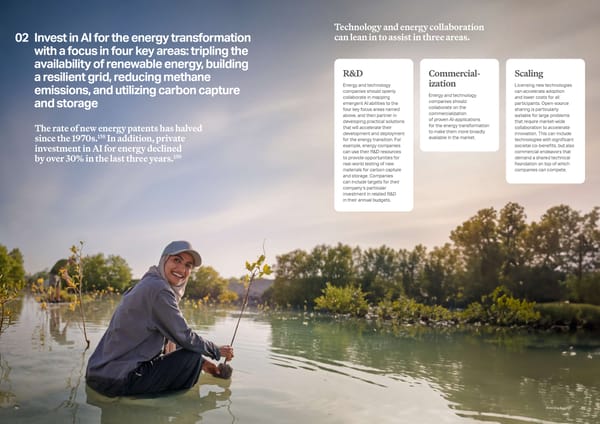The rate of new energy patents has halved since the 1970s.158 In addition, private investment in AI for energy declined by over 30% in the last three years.159 02 Invest in AI for the energy transformation with a focus in four key areas: tripling the availability of renewable energy, building a resilient grid, reducing methane emissions, and utilizing carbon capture and storage Technology and energy collaboration can lean in to assist in three areas. R&D Energy and technology companies should openly collaborate in mapping emergent AI abilities to the four key focus areas named above, and then partner in developing practical solutions that will accelerate their development and deployment for the energy transition. For example, energy companies can use their R&D resources to provide opportunities for real-world testing of new materials for carbon capture and storage. Companies can include targets for their company’s particular investment in related R&D in their annual budgets. Scaling Licensing new technologies can accelerate adoption and lower costs for all participants. Open-source sharing is particularly suitable for large problems that require market-wide collaboration to accelerate innovation. This can include technologies with significant societal co-benefits, but also commercial endeavors that demand a shared technical foundation on top of which companies can compete. Commercial- ization Energy and technology companies should collaborate on the commercialization of proven AI-applications for the energy transformation to make them more broadly available in the market. 92 Powering Possible 91
 Powering Possible 2024: AI and Energy for a Sustainable Future Page 46 Page 48
Powering Possible 2024: AI and Energy for a Sustainable Future Page 46 Page 48